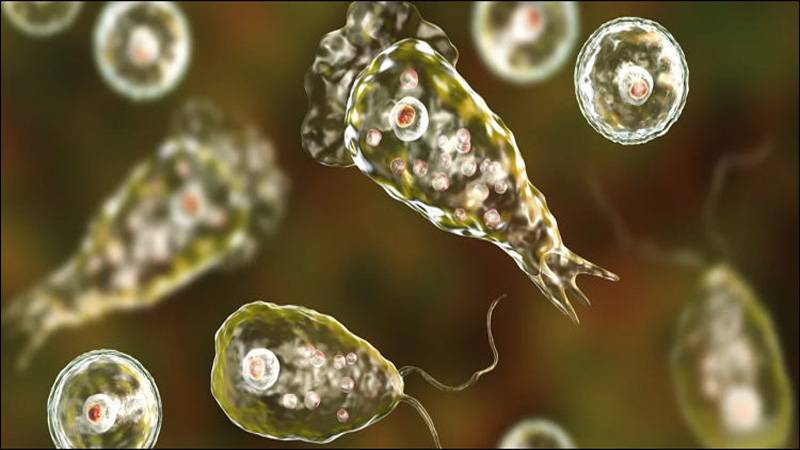
The populace of Karachi is under threat from uncommon yet deadly diseases such as the Crimean-Congo Haemorrhagic Fever (CCHF) and that caused by the waterborne amoeba Naegleria Fowleri.
According to a report in The News, officials of the Sindh Health Department said that the tick-borne CCHF and water-borne Naegleria Fowleri have claimed three more people as their victims.
Moreover, officials from the Pakistan Field Epidemiology and Laboratory Training Program (FELTP) informed media that the month of August had turned out to be a deadly month as 10 people had lost their lives to CCHF in August. So far this year, a total of 16 people had died after catching the life-threatening fever.
The FELTP official narrated a recent incident whereby a stockbroker was brought to Agha Khan University Hospital on Saturday, suffering from high fever and bleeding from the nose and mouth. The patient had tested positive for the disease but succumbed to it during treatment.
Regarding the source of the virus, the health official was of the view that the patient had come in contact with sacrificial animals on Eidul Azha, and had possibly contracted the deadly fever from some infected animal.
Experts say that CCHF is transmitted from animals, especially cattle and livestock with ticks bearing the virus attached to their bodies.
Patients infected by the virus are isolated from other patients and medical professionals to prevent the transfer of the virus. The disease has a fatality rate of 40 percent, especially when patients are late in receiving treatment.
Apart from the tick-borne disease, patients suffering from disease caused by the lethal microorganism Naegleria Fowleri are also fighting for their lives.
Recently, a teenage boy was brought to a private hospital in Kalalpul suffering from nausea, headaches, vomiting and shivering. The boy tested positive for Primary Amoebic Meningoencephalitis (PAM) and died on Sunday night.
PAM is the disease caused by the amoeba Naegleria Fowleri, whereby the microorganism enters the body via water taken in through the nose and then travels to the brain to where it destroys the brain tissue. The ingestion of the microorganism usually occurs during ablution or swimming.
Health officials and experts have claimed that the city is suffering from this waterborne disease after the recent monsoon rains, and PAM is preventable if chlorinated water is provided to citizens.
According to a report in The News, officials of the Sindh Health Department said that the tick-borne CCHF and water-borne Naegleria Fowleri have claimed three more people as their victims.
Moreover, officials from the Pakistan Field Epidemiology and Laboratory Training Program (FELTP) informed media that the month of August had turned out to be a deadly month as 10 people had lost their lives to CCHF in August. So far this year, a total of 16 people had died after catching the life-threatening fever.
The FELTP official narrated a recent incident whereby a stockbroker was brought to Agha Khan University Hospital on Saturday, suffering from high fever and bleeding from the nose and mouth. The patient had tested positive for the disease but succumbed to it during treatment.
Regarding the source of the virus, the health official was of the view that the patient had come in contact with sacrificial animals on Eidul Azha, and had possibly contracted the deadly fever from some infected animal.
Experts say that CCHF is transmitted from animals, especially cattle and livestock with ticks bearing the virus attached to their bodies.
Patients infected by the virus are isolated from other patients and medical professionals to prevent the transfer of the virus. The disease has a fatality rate of 40 percent, especially when patients are late in receiving treatment.
Apart from the tick-borne disease, patients suffering from disease caused by the lethal microorganism Naegleria Fowleri are also fighting for their lives.
Recently, a teenage boy was brought to a private hospital in Kalalpul suffering from nausea, headaches, vomiting and shivering. The boy tested positive for Primary Amoebic Meningoencephalitis (PAM) and died on Sunday night.
PAM is the disease caused by the amoeba Naegleria Fowleri, whereby the microorganism enters the body via water taken in through the nose and then travels to the brain to where it destroys the brain tissue. The ingestion of the microorganism usually occurs during ablution or swimming.
Health officials and experts have claimed that the city is suffering from this waterborne disease after the recent monsoon rains, and PAM is preventable if chlorinated water is provided to citizens.
